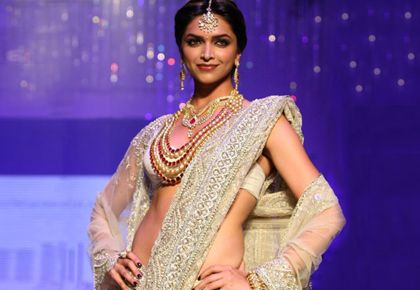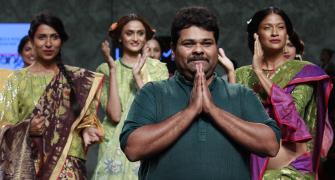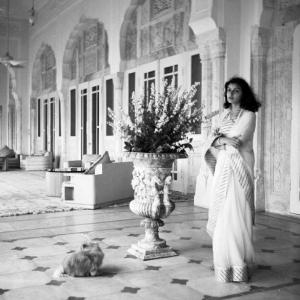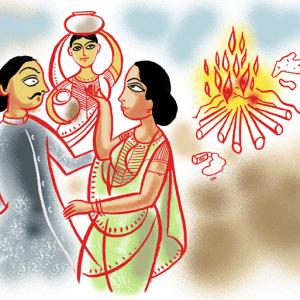Shaming women for drinking beer, laughing loudly and not knowing how to wear a saree spring from the same dark place, says Shuma Raha.
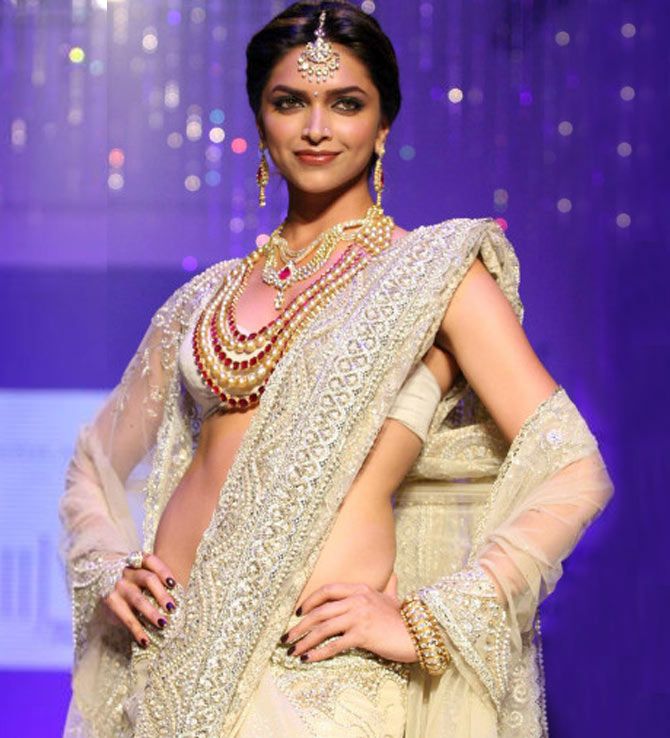
Representational photograph: Courtesy Tonic
One of the items on my mother's to-do list in the days before my wedding was: "Teach her to wear a saree."
That was many years ago when my saree-wearing skills were next to zero. I am much better at the job now, but even so, I invariably have a "bad-saree-day" -- the pleats don't fall right and I weep tears of frustration that they don't. I have ruefully accepted the fact that I shall go through life with less than perfect saree savoir faire.
But recently I realised that mere rueful acceptance was not enough. I ought to be seriously ashamed of myself, perhaps flagellate myself for my flawed saree skills and my preference for attire of the non-saree kind. Because according to Sabyasachi Mukherjee, the super A-list couturier who dresses Bollywood stars, zillionaire brides and sundry rich folk, Indian woman who do not know how to wear a saree should hang their heads in "shame".
Mukherjee could not have chosen a better time for his stern rebuke to errant Indian women. Coming as it did on the heels of Goa chief minister Manohar Parrikar's shock and horror at girls drinking beer and Congress MP Renuka Chowdhury's loud laugh in Parliament being lampooned as the cackle of a demoness in the Ramayana, Mukherjee's comment made up a perfect triptych of male conviction that they have the right to tell us how we should or should not comport ourselves.
Shaming us for drinking beer and shaming us for not knowing how to wear (and hence not wearing) a saree spring from the same dark place.
Sure, the saree is a part of Indian culture. The infinite variety of its weaves and motifs, honed and handed down by generations of artisans, is a dazzling facet of our cultural heritage. Whether it is a butter soft Banarasi or a shimmering Kanjeevaram, sarees are the many-splendoured fruits of India's looms.
And perhaps there are as many ways of draping a saree as there are kinds of sarees. For example, the Coorgi way is very different from the Maharashtrian way, the mekhla chador of Assam a world apart from the north Indian sidha palla or Bengal's shada shidhe style.
The prototype of the modern saree drape is said to have been the brainchild of Jnanadanandini Devi, wife of Rabindranath Tagore's brother Satyendranath. In Thakurbarir Andarmahal, a book about the women of the Tagore family, Chitra Deb writes that sometime in the 1860s, Jnanadanandini borrowed elements from the Parsi drape and devised a new saree-wearing style.
This was further spiffied up by Suniti Devi, Maharani of Cooch Behar and daughter of social reformer Keshav Chandra Sen.
Thus, was born the saree drape with the pallu on the left and fishtail pleats in the front -- undoubtedly a huge event in the history of Indian fashion.
But fashions change and cultures evolve.
If they didn't, Western women would still be in their crinolines and bustle skirts and Indian men would be in their dhoti, veshti or mundu. (Mukherjee laughingly acknowledged that the dhoti was dead, but failed to find similar indulgence for women who give sarees a wide berth.)
A lot of Indian girls and women struggle to drape the saree properly because unlike their foremothers, they do not wear it every day. They'd rather follow global fashion trends than fill their wardrobes with sarees, which do seem to belong to a more gracious and slow-paced age than ours.
Mukherjee must know that those who pick up his bling-encrusted, multiple-lakh sarees and lehngas do so only for a day's style statement. Once that glittering wedding or sangeet or party is done, they likely slip back into their Western and other outfits.
The point is, while there is no glory in not wearing a saree, neither is there any shame.
Contrary to what our head-in-the-sand patriarchy believes, Indian culture is a fluid, vastly accommodating thing.
It's a culture where we can celebrate Valentine's Day and Shivratri with equal fervour on the same day. So, if we choose to wear a skirt instead of a saree, we don't become asanskari hussies -- we merely participate in the larger process of a continually evolving cultural ethos.
It would of course be a tragedy if the rich tradition of sarees died out owing to lack of patronage. Hence, let us by all means have initiatives to put the swag back into sarees so Indian girls and women embrace them in their daily lives.
But to insist that we should wear sarees as a matter of cultural duty is a total turn-off.
